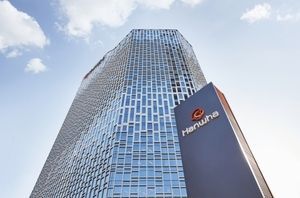|
Samsung Electronics dominated the U.S. foldable phone market in the third quarter of this year with a nearly 90% market share. It remains to be seen whether Samsung can establish itself in the local market where Apple holds more than half of the market share through the new mainstream form factor, foldable.
According to market research firm Canalys, Samsung Electronics recorded first place in the U.S. foldable smartphone market in the third quarter of this year with an 87% market share. Motorola and Google recorded 9% and 4%, respectively, followed by second and third places.
Although smartphone manufacturers have recently entered the foldable business led by Samsung Electronics, Samsung is still leading the market. Motorola, which recovered a market share of 10% in the U.S. smartphone market for the first time in six quarters and rose to third place, released a new foldable phone, ‘Razr40 Ultra’, last June, but its market share was only 9%.
The U.S. is the second-largest smartphone market after China. However, even Samsung Electronics, the world’s no.1 smartphone market, is falling behind Apple every quarter in the U.S. market. According to Canalys, Apple (57%) recorded first place in the U.S. smartphone market share in the third quarter of this year, and Samsung (24%) recorded second place. This is contrary to the global market, where Samsung outperformed Apple (18%) with a 22% market share during the same period.
The strategy for Samsung Electronics to leap to first place is to target the foldable market. According to a survey by YouGov, 50% of U.S. consumers showed interest in purchasing a foldable smartphone as their next mobile device. Notably, 47% of iPhone users are considering purchasing a foldable phone.
In the industry, it is analyzed that Samsung Electronics needs to lower the device’s price to increase the distribution rate of foldable smartphones in the U.S. market. YouGov explained, “The price of foldable smartphones in the U.S. market is between US$1,000 and $2,000 (approximately 1.32 million to 2.64 million KRW), greatly exceeding the average American’s price. Only 12% of Americans are willing to spend more than $1,000 on a mobile phone, and about 43% are not willing to spend more than $600 (approximately 790,000 KRW).”
Accordingly, Samsung Electronics is expected to expand its consumer base by raising the price selection range, such as introducing new low-to-mid-priced foldable phone products below 1 million KRW. Market research firm TrendForce said, “Samsung Electronics plans to lower the price barrier by launching a mid-to-low-priced foldable phone model in the second half of next year, allowing more consumers to use foldable mobile phones.”
Samsung Electronics will also conduct aggressive marketing, such as selling the Galaxy Z series at up to $1,000 cheaper from the beginning of this month. It attempts to attract consumers ahead of the year-end shopping season leading up to Black Friday and Christmas, the largest events in the U.S.
Competitor Apple is also preparing to launch a foldable device. According to foreign media such as MacRumors and 9to5Mac, Apple is expected to launch a foldable iPhone following the release of a foldable iPad next year. Apple has also filed several patents related to foldables, including a technology that automatically folds the screen to prevent LCD damage when the foldable phone is dropped.
There are predictions that the smartphone market will be reorganized around foldable phones in 1-2 years. Market research firm Strategy Analytics (SA) predicted that the global foldable phone market sales will exceed 100 million units by 2025. TrendForce also predicted that the foldable phone market will grow by 38% next year compared to this year.
By. Choi Ji Hyun











Most Commented